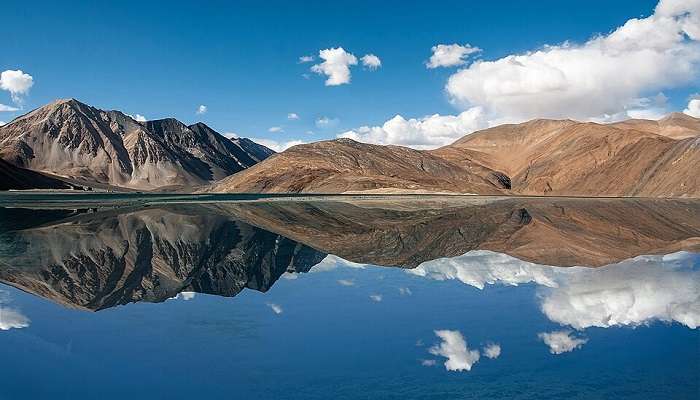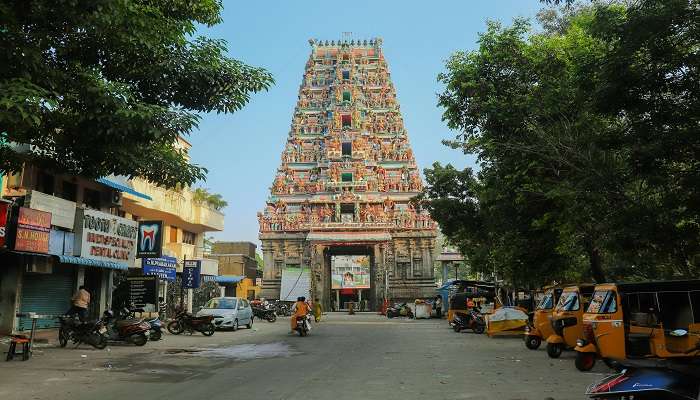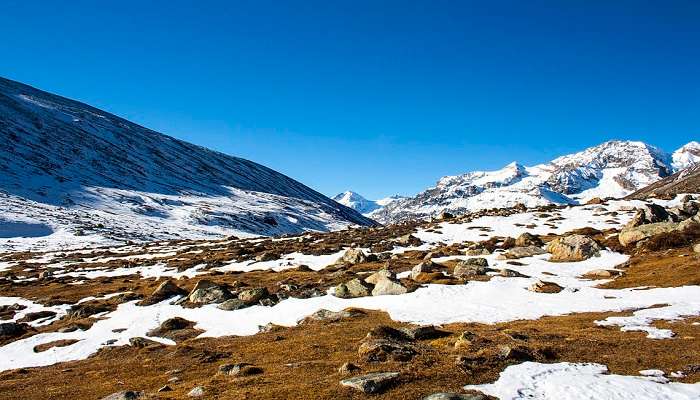A Comprehensive Guide To Explore Sualkuchi In Assam In 2025
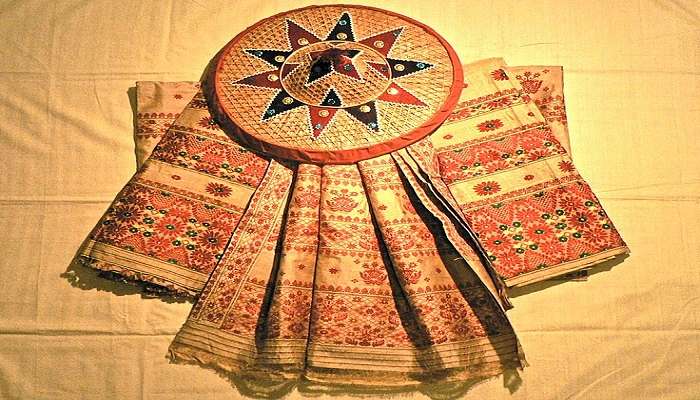
Nestled on the banks of the mighty Brahmaputra River, Sualkuchi is a hidden gem in Assam, India. Known as the “Manchester of the East,” this small town has earned its reputation as the silk-weaving capital of the region. For centuries, Sualkuchi has been home to skilled artisans who have mastered creating exquisite Assamese silk fabrics, particularly the renowned Muga silk. The rhythmic clacking of handlooms echoes through narrow lanes, where tradition and craftsmanship intertwine to produce some of the finest silk textiles in the world. Sualkuchi’s rich heritage and picturesque surroundings offer visitors a unique glimpse into the heart of Assamese culture and the timeless allure of silk weaving.
About Sualkuchi
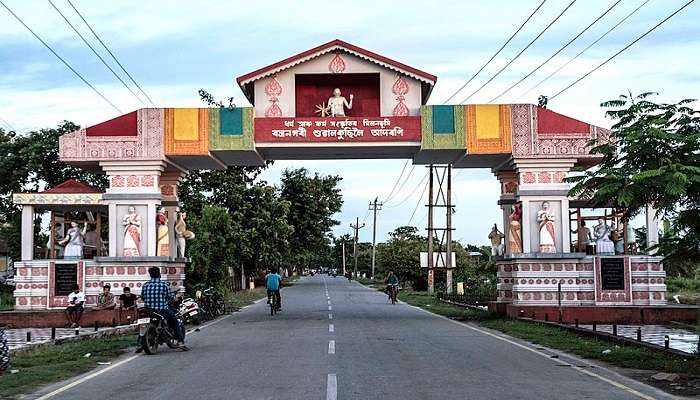
Sualkuchi is a small town in the Kamrup district of Assam, India. It’s situated on the north side of the Brahmaputra River, about 35 km away from Guwahati. The town is famous for its many small businesses that focus on handloom, which makes it an important place for making Muga silk, Pat silk, Eri silk, and Endi cloth. Sualkuchi’s history can be traced back to the 4th century BC. This is evident from Kautilya’s reference to Suvarnakudya, a location in ancient Kamrupa known for producing the finest quality of Patrorna, also known as Pat. The village was later renamed Sualkuchi. Sualkuchi’s evolution into a silk-weaving village dates back to the 17th century, during the reign of King Swargadeo Pratap Singha (1603-1641) of the Ahom Kingdom. The village flourished when the Ahoms took over Sualkuchi, defeating the Mughals in the mid-17th century. The Pala and Ahom kings highly patronized the art of silk weaving. During this era, it was a luxury enjoyed exclusively by Assam’s royalty and noble families.
Initially, Sualkuchi was a craft village that housed various cottage industries such as handloom weaving, oil processing, pottery, gold making, and more. However, all these crafts, except weaving, have nearly vanished. The weaving industry in Sualkuchi was primarily confined to the Tanti community until the 1930s. Subsequently, individuals from other communities also embraced silk weaving. The industry received a significant boost during the 2nd World War. Today, Sualkuchi is a business area where the craft of hand weaving is a big part of life. The sounds of the weaving machines and tools can be heard in the small roads of Sualkuchi. The town continues to be a special place for silk materials, and its Muga & Eri silks, also called Ahimsa Silk, are only found in Assam.
Must Read: Things To Do In Assam
Top 4 Places To Visit In Sualkuchi
There are plenty of places to visit in Sualkuchi. Some of the top places to visit in Sualkuchi include the following:
1. Brahmaputra River
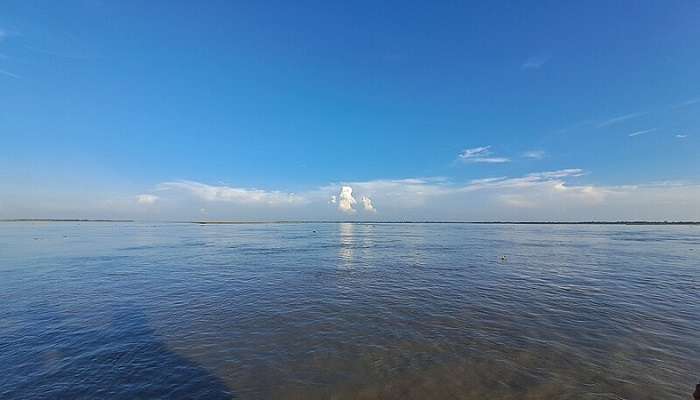
The mighty Brahmaputra River flows through Sualkuchi, supporting the region’s fertile plains and the livelihoods of many people. Beyond its practical importance, the Brahmaputra offers a wonderful experience for visitors. They can enjoy boat rides, enjoying the river’s calm beauty and the lovely landscapes along its banks.
For those seeking adventure, kayaking and rafting through the river’s currents provide an exciting thrill. As the day ends, one can see the stunning sunset, with the sky turning shades of orange and pink, casting a magical glow on the river’s surface.
Distance From Sualkuchi: 146 Km
Travel Time From Sualkuchi: 4 Hours 3 minutes
Entry Fees: 100 INR per person
Best Time to Visit: November to April
2. Powa Mecca Mosque
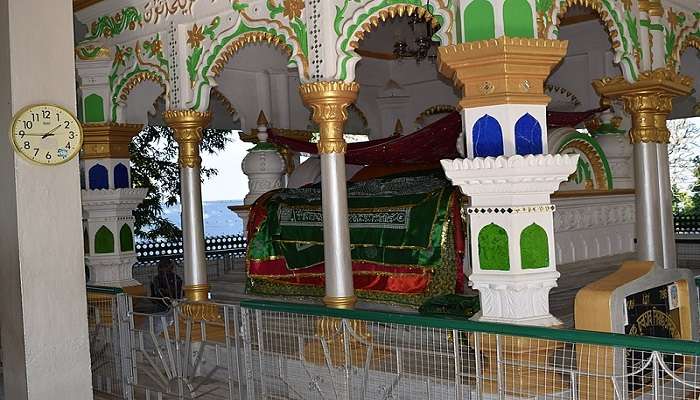
The Powa Mecca Mosque in Hajo, Assam, is a prominent Islamic pilgrimage destination. Constructed by Sujauddin Mohammed Shah in 1657 AD during the reign of the esteemed Mughal Emperor, Shahjahan, the mosque is recognised for its unique spiritual value. It is believed that praying at this mosque bestows one-fourth of the spiritual enlightenment that could be attained at Mecca. The mosque, perched on the Garudachala Hill, also serves as the tomb of Pir Ghiyasuddin Auliya, a pioneer of Islam in this region.
Powa Mecca is an important pilgrimage site for both Muslims and Hindus. The mosque is believed to have sacred soil from the original Mecca, making it very special. It is located on a hill, giving a peaceful view of the Brahmaputra River. Next to the mosque is the Hayagriva Madhava Temple, another popular tourist spot. The best time to visit Powa Mecca is in the winter when the weather is nice.
Distance From Sualkuchi: 14.6 Km
Travel Time From Sualkuchi: 33 minutes
Entry Fees: Free
Best Time to Visit: October to March
Suggested Read: National Parks In Assam
3. Shri Shri Hayagriva Madhav Mandir
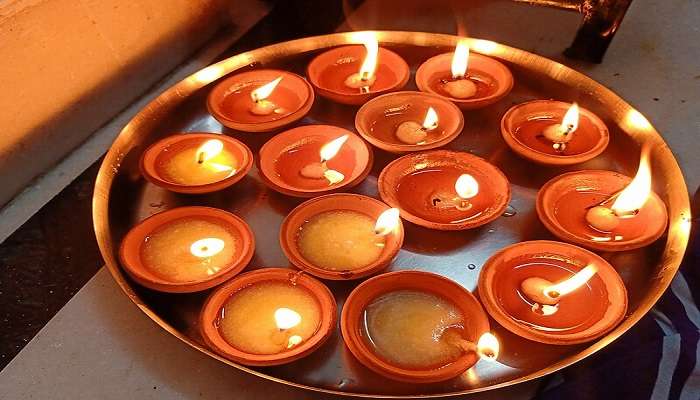
Shri Shri Hayagriva Madhav Mandir, a revered Hindu temple dedicated to Lord Vishnu, stands tall on Monikut Hill in Hajo, Assam. Built in the 16th century, the temple boasts intricate stone carvings and a serene atmosphere. The presiding deity, Hayagriva Madhav, is believed to be a form of Vishnu with a horse’s head.
Pilgrims flock here to seek blessings and immerse themselves in the rich religious ambience. The temple’s significance extends beyond Hinduism, as Buddhists also revere it. Visitors can explore the temple’s architecture, attend religious ceremonies, or soak in the peaceful surroundings.
Distance From Sualkuchi: 10.3 Km
Travel Time From Sualkuchi: 22 minutes
Entry Fees: Free
Best Time to Visit: Throughout the year
4. Siddheswar Devalaya
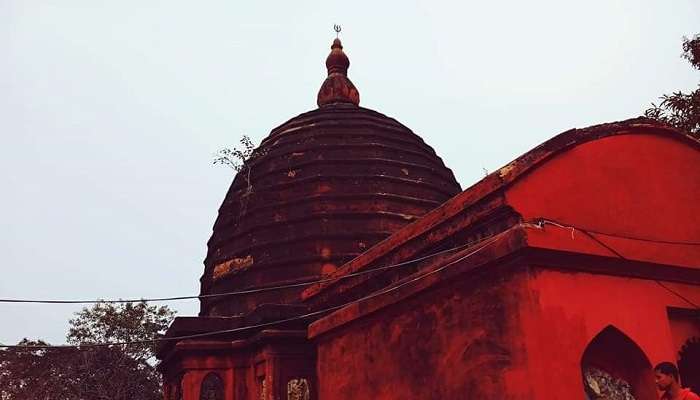
Siddheswar Devalaya, perched on Siddheswari Hill in Sualkuchi, Assam, is an ancient shrine dedicated to Lord Shiva. This sacred spot, revamped by the Ahom king Shiba Singha, is a hotspot for devotees seeking blessings and soaking in its tranquil vibe. The temple’s striking architecture and historical charm make it a must-see for anyone interested in Assam’s rich cultural tapestry.
When you’re at Siddheshwar Devalaya, don’t miss exploring Sualkuchi’s nearby silk village, famous for its stunning hand-woven silks. The temple really comes alive during ‘Bhole Bom,’ drawing long lines of devotees. Besides the temple, you can enjoy gorgeous views of the Brahmaputra River and check out other local gems like the Ganesh Bigrah Temple and Hayagriva Madhava Temple.
Distance From Sualkuchi: 1.1 Km
Travel Time From Sualkuchi: 17 minutes
Entry Fees: Free
Best Time to Visit: Throughout the year
Suggested Read: Kaziranga National Park
Best Time To Visit Sualkuchi
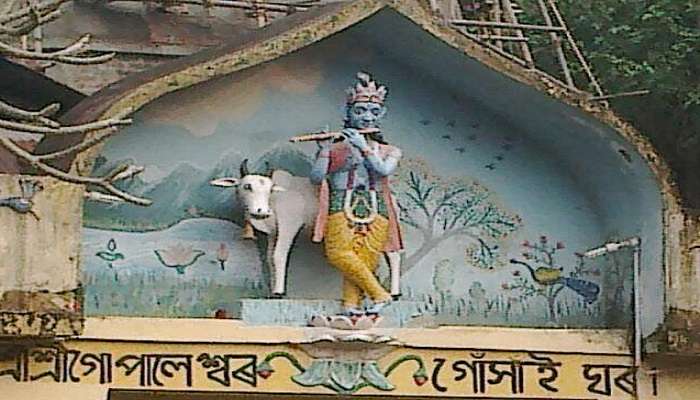
The best time to visit Sualkuchi is between October and March. The weather is super pleasant during these months, making it perfect for exploring the village and its surroundings. Cooler temperatures and clear skies are ideal for diving into the local culture and checking out the sights without dealing with oppressive heat and humidity.
Plus, if you time your trip right, you’ll get to catch some awesome cultural festivals and events that highlight the vibrant traditions of the region.
How To Reach Sualkuchi?

Sualkuchi is often called the “Manchester of Assam” because it’s well-known for silk weaving. There are many ways to get to Sualkuchi. They are:
By Air
The closest airport to Sualkuchi is Gopinath Bordoloi International Airport in Guwahati, about 30 kilometres away. You can travel to this airport from many significant urban communities in India. When you land, you can take a taxi to Sualkuchi.
By Road
To reach Sualkuchi by road, drive northeast on NH27 from Guwahati. It’s about 35 kilometres away and should take you around an hour. If you’re coming from other cities, connect to NH27 or other major routes leading to Guwahati first. Once in Guwahati, follow the signs to Sualkuchi.
By Train
The nearest railway station to Sualkuchi is Kamakhya, about 30 km away. From Kamakhya, you can easily take a taxi or a bus to the village.
Local Transport
A cab is the most convenient way to commute in and around Sualkuchi, ensuring comfort during the road journey. A private transport company also offers water commuting between Sualkuchi and Fancy Bazaar Jahaj Ghat.
Further Read: River Rafting In Assam
Sualkuchi is a great example of Assam’s deep cultural history and skill in crafts. This small town, often called the “Manchester of Assam,” keeps making magic with its weaving machines, creating some of the best silk materials in the world. The hard work of its craft workers, the attractiveness of its textiles, and the friendly nature of its people make Sualkuchi a place everyone should visit, especially if they are interested in traditional crafts and fashion or just want to experience the core of Assamese culture. Are you ready to discover Assam’s silk center? Book your trip to Assam today and experience its magic. Listen to the looms as they create beautiful golden silk. Make unforgettable memories and support local artisans by witnessing their living heritage.
For our editorial codes of conduct and copyright disclaimer, please click here.
Cover Image Credit: Satnath for Wikimedia Commons
Frequently Asked Questions About Sualkuchi
What is Sualkuchi famous for?
Sualkuchi is renowned for its stunning Muga and Eri silk weaving, a gem of Assam’s cultural heritage. Here, you can dive into traditional weaving methods, check out local silk hubs, and snag some one-of-a-kind silk products.
Is Sualkuchi worth visiting?
Sualkuchi is totally worth checking out, especially if you're into traditional crafts and local culture. Often called the 'Silk Village of Assam,' it's renowned for its beautiful Muga and Eri silk weaving. You’ll find lively markets and super-skilled artisans here.
Which place is called Manchester of Assam?
Sualkuchi is often called the “Manchester of Assam” due to its significant contribution to the textile industry and its prominence in silk weaving.
Which is the silk town of Assam?
Sualkuchi holds the esteemed title of “Assam’s Silk Capital.” It’s renowned for its centuries-old silk weaving tradition, which produces various Indigenous materials like Muga and Pat silk.
Which railway station is near Sualkuchi?
The nearest railway station to Sualkuchi is the Kamakhya railway station, which is approximately 30 km away from the city. This station provides convenient access for visitors traveling by train.
People Also Read:
Places To Visit In Assam In May Things To Do In Assam Picnic Spots In Assam

Innovative Content Writer Focused on Producing High quality, Original Content that drives traffic and engages readers. Experienced in Content strategy and analytics to measure content performance using tools such as SQL, Power BI, Excel.



